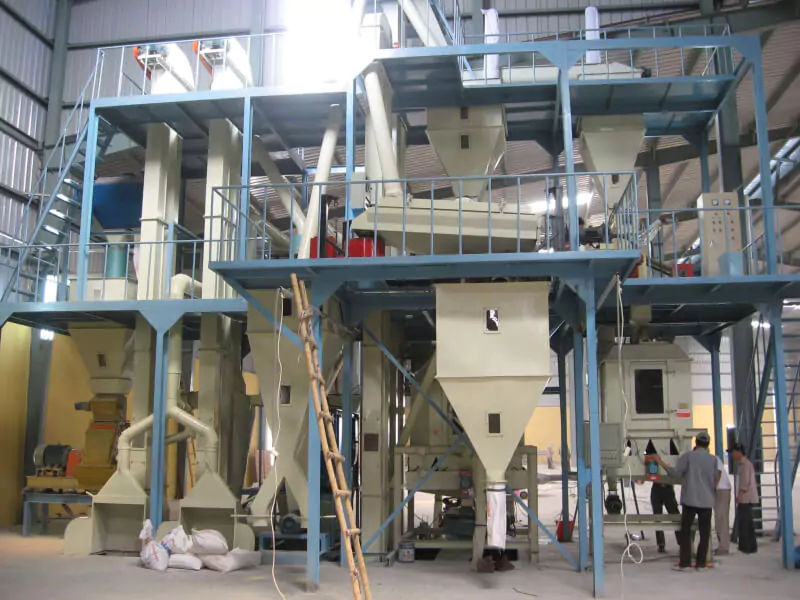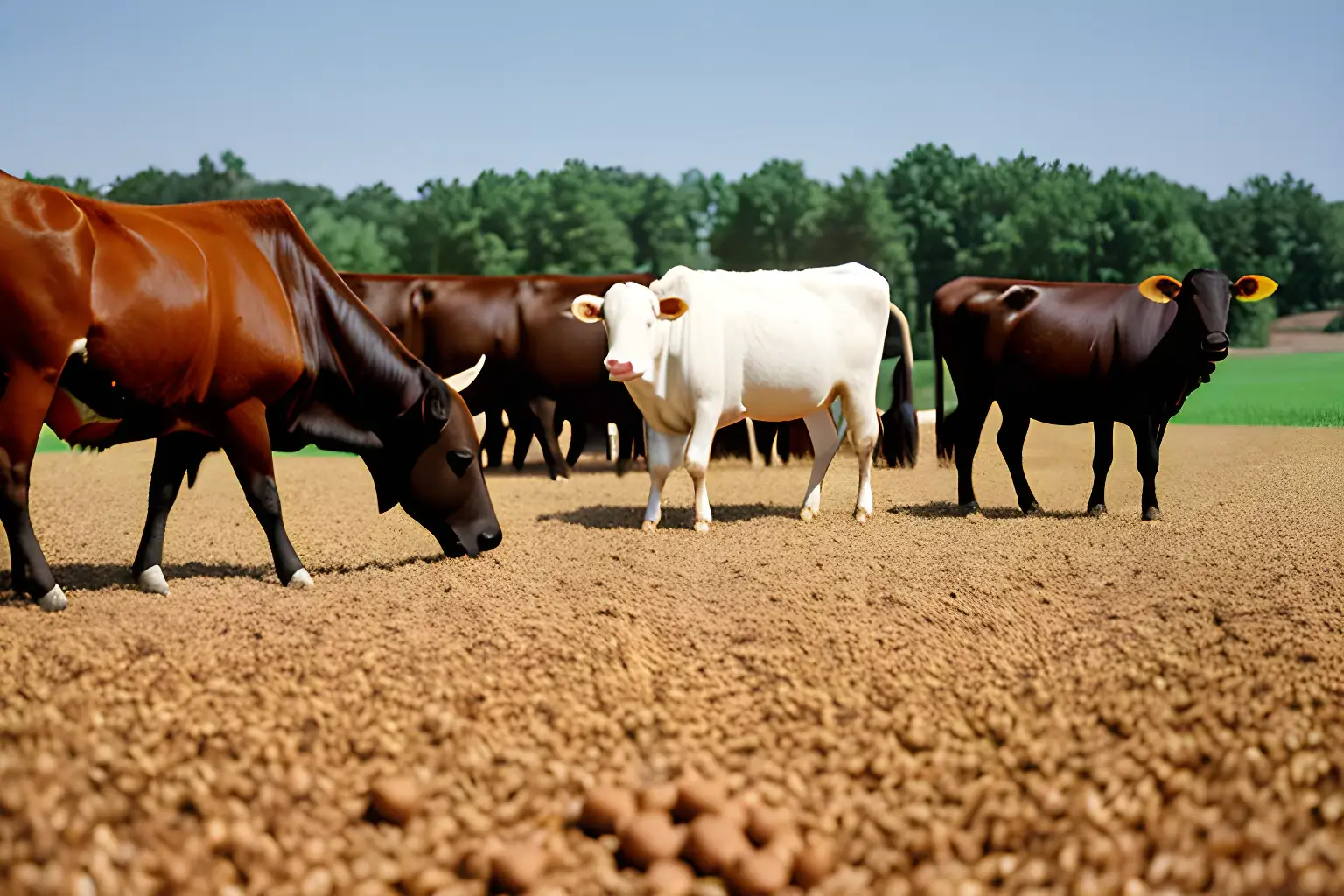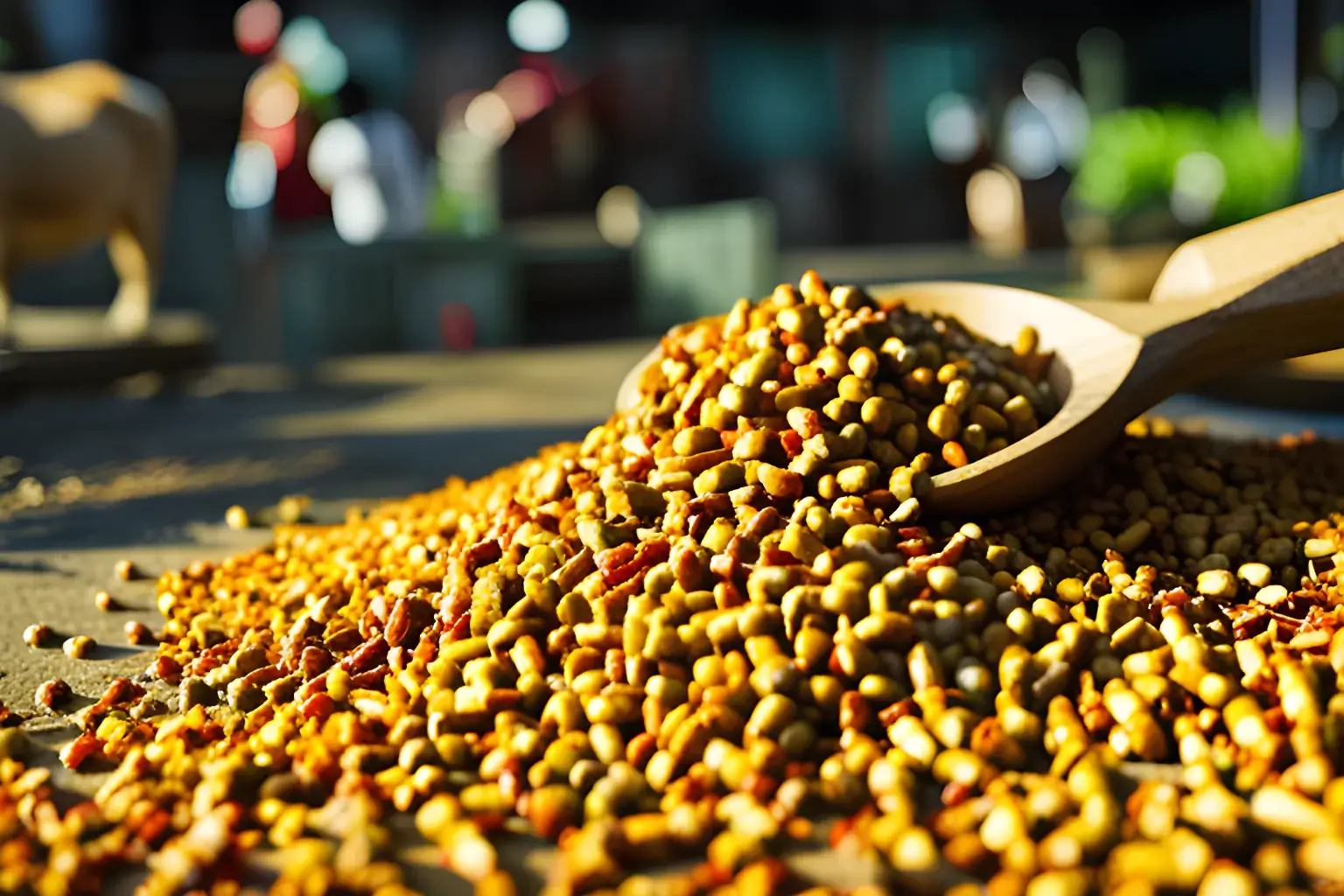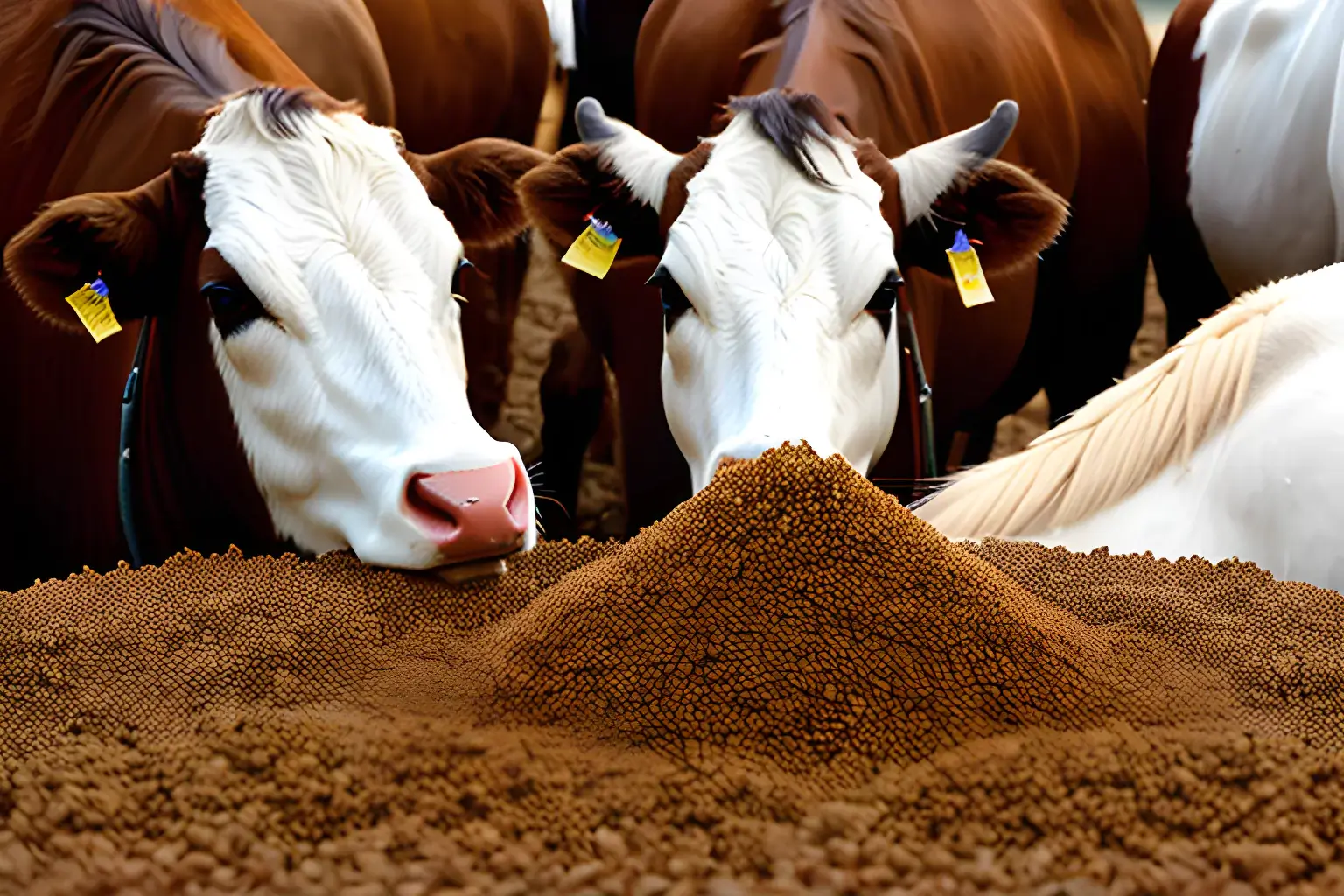
| Price | 25000-60000 USD |
| Delivery Time | 20-25 days |
| Available | In Stock |
| Package | In Free Fumigation Wood Box |
| Guarantee | 1 Year |
| Shipping | By Sea or By Air |
| Payment Method | Wire Transfer or Western Union |
| Brand | Victor |
Product Overview
| Production Output | 0.5-15 t/h |
| Power | Electric motor |
| Voltage | 110-415V |
| Raw Materials | Cereal, corn, wheat, barley flour, soybean, oil seed meal, fish meal, bone meal, grass meal, hay meal, etc |
| Type | flat die type and ring die type |
| Final Pellet Size | 3-10 mm |
| Application | producing animal feed and poultry feed pellets |
| Used For | cattle feed production |
Introduction
For any cattle farmer, whether you’re raising beef or dairy, feed is your biggest ongoing expense. It’s also the key to healthy, productive animals. But when commercial feed costs rise and the quality is out of your hands, it can feel like you’re not in control of your own farm’s success. A cattle feed pellet plant is a major step towards taking back that control. It’s a system that lets you turn raw ingredients into high-performance feed that is perfectly tailored to your herd.
working video
4 Key Advantages of Cattle Feed Plant Investment
Investing in your own cattle feed plant offers powerful advantages for your cattle operation.
Take Full Control of Your Biggest Expense.
This is a major benefit. You can purchase your raw cattle feed ingredients, like grains and protein meals, in bulk at wholesale prices. This avoids the markups and transportation costs that are built into commercial feed prices.
Create Custom Nutrition for Your Herd’s Specific Needs.
You have the power to create different feed formulas for dairy cows versus beef cattle. You can also make different rations for various life stages, like for calves, growers, and lactating cows. This means you control the exact protein, energy, and fiber your animals get.
Stop Selective Feeding and Reduce Feed Waste.
Pellets deliver a Total Mixed Ration (TMR) in every single bite. This is very important because it prevents cows from just picking out the tasty corn and leaving the important fiber and supplements behind. This leads to less wasted feed.
Improve Herd Health and Overall Performance.
Consistent, fresh, and high-quality feed leads directly to better animal health. It promotes a healthy rumen environment. For dairy cows, this often means higher milk yields. For beef cattle, it means faster and more efficient weight gain.

Cattle Feed Plant Machinery: 6 Essential Processing Systems
Each machine in a cattle feed plant has a vital role to play.
1. The Grinding Section (Heavy-Duty Hammer Mill):
Cattle feed often requires grinding both grains and tougher forages like hay. A heavy-duty hammer mill type cattle feed grinder is needed to reduce these ingredients to the correct particle size. This is important for good mixing and for the cow’s digestion.
2. The Mixing Section (Large Capacity Mixer):
This is the secret to creating a true and perfectly blended Total Mixed Ration (TMR). A large cattle feed mixer ensures that all the ground ingredients, protein meals, minerals, and vitamins are evenly distributed throughout the entire batch.
3. The Conditioning Section (Steam Conditioner):
This is a critical step for making cattle feed more digestible. The conditioner adds steam to the mixed feed. This heat and moisture help to cook the starches in the grains. It also makes the pellets more durable.
4. The Pelleting Section (Robust Pellet Mill with Large Dies):
Cattle feed needs larger pellets, often from 6mm to 12mm in diameter. The cattle feed pellet mill must be strong enough to handle fibrous ingredients like hay or alfalfa.
5. The Cooling & Screening Section:
Cooling is essential to prevent mold and to create a hard, durable pellet. After the pellets come out of the mill hot, a cooler brings them down to a safe temperature. A screener then removes any fine dust.
6. The Storage & Packing Section:
This includes silos for storing finished feed in bulk. It can also include bagging systems for distribution and sale.


The Cattle Feed Production Process: From Raw Ingredient to Pellet
Here is a general look at the simple steps in a modern cattle feed plant or you can check how to make cattle feed in details:
- Receiving & Quality Inspection of raw materials like grains, protein meals, and forages.
- Grinding the grains and forages to the correct particle size.
- Precise Batching & Mixing of all the ingredients according to your specific formula.
- Steam Conditioning to prepare the mash for pelleting.
- Pelleting to form the dense pellets of the correct size.
- Cooling and Hardening the finished pellets.
- Screening to remove any fine dust or broken pieces.
- Bagging or Bulk Storage and transport.
Cattle Feed Plant Setup: 5 Critical Planning Factors for Success
Starting a cattle feed plant is a big project. Careful planning is the key to success.
1. The Make-or-Break Factor: Your Raw Material Supply.
“Can you get a consistent, reliable, and affordable supply of high-quality ingredients like maize, soy, and forages all year round? If the answer is not a strong ‘yes’, you need to solve this problem first.”
2. Know Your Herd’s Needs & Required Capacity (Tons/Hour).
Determine how much feed you need now and in the future. This will help you choose the right size for your plant.
3. Design Your Facility for Efficient Flow and Safety.
Think about logistics for trucks. You will also need space for raw material and finished feed storage. Proper utilities like power and water, and a good plan for dust control, are also essential.
4. Choose a Supplier, Not Just a Machine.
Look for suppliers who have proven experience in building cattle feed plants, not just any type of pellet mill. Ask them about their after-sales support and spare parts availability.
5. Do the Math: Calculating Your Return on Investment (ROI).
Carefully figure out all your initial and ongoing costs. Compare these to the savings you’ll achieve by making your own feed. This will help you see if the investment makes financial sense.

Cattle Feed Plant Optimization: 3 Technical Success Factors
Don’t Underestimate the Conditioner.
“Proper steam conditioning is often the secret to getting cattle to love your feed. It makes the pellets taste better to them. It also makes the pellets much more durable, so they don’t fall apart in the feed bunk.”
Trying to Pellet Poorly Ground Hay.
“It will jam your machine and create bad pellets. The grinder that prepares your forages is just as important as the pellet mill itself. Don’t skimp on it.”
Start with a Simple, Proven Formula.
“Don’t try to be a scientist on day one. Get a good base recipe from a trusted nutritionist. Perfect your production process with that recipe first. You can always get more complex later on.”
Conclusion
A cattle feed pellet plant is a serious investment for large-scale farmers who want to take full control of their herd’s nutrition and their farm’s biggest cost. While it requires meticulous planning, a well-run plant is a powerful tool for building a healthier, more productive, and more profitable cattle operation.

FAQ About Cattle Feed Pellet Plant
What are the main ingredients in a typical cattle feed pellet formulation?
A: A typical cattle feed formulation is a mix of energy sources (like corn/maize and barley), protein sources (like soybean meal and cottonseed cake), forages (like alfalfa meal), and a vital vitamin and mineral premix. The exact proportions depend on whether the feed is for beef or dairy cattle.
What pellet size is generally best for cattle?
A: This depends on the age of the animal. Young calves may need smaller 4-6mm pellets or crumbles. However, growing and adult cattle can easily handle much larger pellets, often ranging from 8mm to 12mm in diameter, or even larger cubes.
What’s the main difference between a cattle feed plant and a poultry feed plant?
A: While the core process is similar, the machinery is often different. Cattle feed plants often use more robust grinders to handle fibrous forages and use larger pellet dies to make bigger pellets. Poultry feed pellet plants are more likely to need a special machine called a “crumbler” to make starter feed for young chicks.
What is a TMR and how does a feed plant relate to it?
A: TMR stands for Total Mixed Ration. It’s a feeding method where all the different ingredients – forage, grains, proteins, supplements – are blended together in a feed mixer. A feed plant is the ideal way to produce the pelleted or concentrate portion of a TMR with perfect consistency every time.
How much does it cost to set up a small cattle feed pellet plant?
A: It is a major investment. Even a small but complete plant (for example, one that makes 1-2 tons of feed per hour) can cost from tens of thousands to well over a hundred thousand US dollars. The final price depends heavily on the machinery’s quality, the scale of the plant, and the level of automation.
